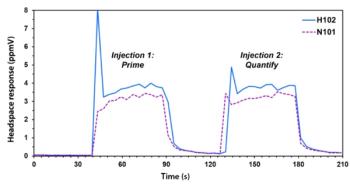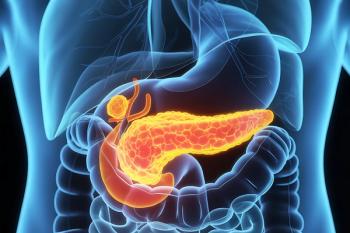
E-Separation Solutions
- E-Separation Solutions-06-16-2008
- Volume 0
- Issue 0
Ask the Editor: Degassing
Q: We currently use a glass filtration setup attached to a pump using 0.45-?m membrane filters. The flask contains a magnetic stirrer. As the solution passes the membrane filter, gas bubbles appear on its surface. As soon as the solution has completely passed through the filter the vacuum pump is turned off and the solution is poured from this setup into another bottle and stoppered until use (up to 3?4 days time). The HPLC equipment has inline degassers that are routinely used. Besides filtering is this setup degassing? To effectively degas a solution should the solution remain under vacuum for a longer period than the time it takes to filter? Should we be using this setup to filter?degas HPLC-grade solvents or commercial mobile phases?
The following question and answer were posted on the Chromatography Forum website. The answer was provided by Tom Jupille of LC Resources/Separation Science Associates.
We currently use a glass filtration setup attached to a pump using 0.45-µm membrane filters. The flask contains a magnetic stirrer. As the solution passes the membrane filter, gas bubbles appear on its surface. As soon as the solution has completely passed through the filter the vacuum pump is turned off and the solution is poured from this setup into another bottle and stoppered until use (up to 3â4 days time). The HPLC equipment has inline degassers that are routinely used. Besides filtering is this setup degassing? To effectively degas a solution should the solution remain under vacuum for a longer period than the time it takes to filter?Should we be using this setup to filterâdegas HPLC-grade solvents or commercial mobile phases?
Is the setup degassing as well as filtering? Yes, to some extent. As for the efficacy of degassing a solution by filtration, it depends on what you mean by "effectively." The problem is that the solubility of air in binary mixtures of polar organics and water is lower than the average of the solubilities in either of the pure solvents. When you mix the solvents, the excess air comes out as bubbles.
In the case of premixed mobile phase, vacuum filtration is probably sufficient. All you have to do is to give the excess air (bubbles) a place to go. In the case of "on-line mixing," the job is a lot harder, because you have to get the dissolved air levels in each component down far enough that you will be below the saturation curve when you mix them. In any case, as soon as you expose the solvents to the atmosphere, they start to re-saturate.
Regarding the part of the question about filtering HPLC-grade solvents, they are typically filtered through 0.2-µm filters at the bottling point.
Questions?
LCGC technical editor Steve Brown will answer your technical questions. Each month, one question will be selected to appear in this space, so we welcome your submissions. Please send all questions to the attention of "Ask the Editor" at
Articles in this issue
over 17 years ago
Isolation and Purification of Polysaccharidesover 17 years ago
Technology Forum: HPLC-Chiralover 17 years ago
Market Profile: Continuous Flow Analysis and Discrete Analyzersover 17 years ago
GPC/SEC analysis of Mono-, Di-, Tri-acylglyceride'sover 17 years ago
Modern Countercurrent ChromatographyNewsletter
Join the global community of analytical scientists who trust LCGC for insights on the latest techniques, trends, and expert solutions in chromatography.





